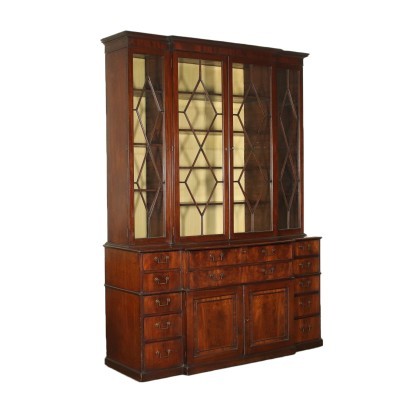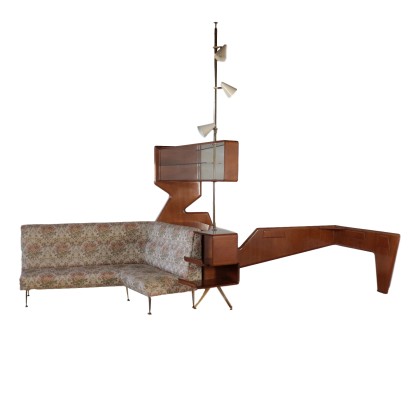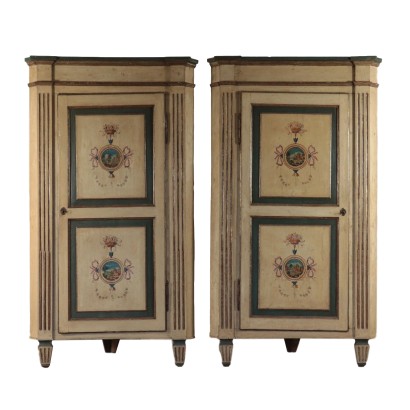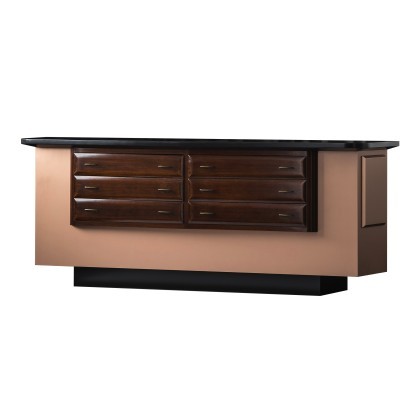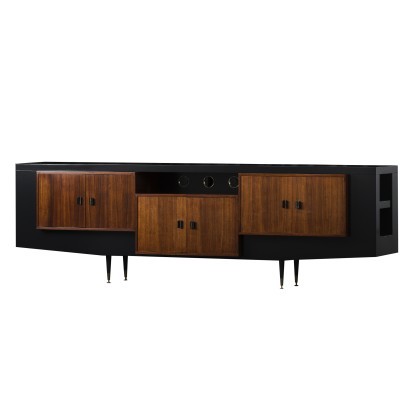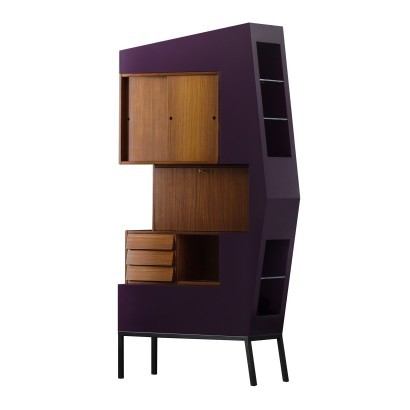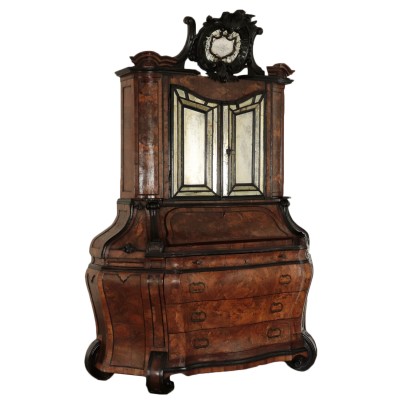Bookcase George IV Mahogany Glass England '800 - George IV Mahogany Break Front Secretaire Bookcase
Features
George IV Mahogany Break Front Secretaire Bookcase
Style: George IV (1760-1830)
Age: 19th Century / 1801 - 1900
Origin: United Kingdom
Main essence: Mahogany
Material: Glass
Description
George IV English bookcase with a broken front, in the lower part it has five drawers on the sides, while in the center a pair of doors surmounted by two fake drawers, concealing a compartment with drawers and writing desk with Moroccan insert, the central part can be lifted by a lectern, while the sides hide secret compartments and document compartments, marked with the letters of the alphabet. The upper body has four doors with glasses marked by geometric wooden motifs (two glasses are broken); the top features a molded hat. Mahogany.
Product Condition:
Product that due to age and usage requires restoration and resumption of polishing.
Dimensions (cm):
Height: 245
Width: 175
Depth: 62
Certificate issued by: Enrico Sala
Additional Information
Style: George IV (1760-1830)
It is part of the so-called "Georgian" period.This term designates the stylistic activity that took place in England between 1714 and 1830 and included the reigns of George I, George II, George III and George IV.
It is characterized, at its beginnings, by an attitude of reaction to the Baroque.
Precise characteristics and distinctions of this style are not clearly identifiable in the furniture created in England in the eighteenth century.
In the first half of this century, cabinet-making and the products of the various categories of English applied art were affected by the continuous changes in taste and manifested, in the diversity of trends and influences, the uncertainty of a precise stylistic orientation.
In the second half of the eighteenth century, the sensitivity and exceptional ingenuity of four strong personalities, destined to guide the English taste and customs of the time, intervened in the second half of the eighteenth century: Th. Chippendale, R. Adam, G. Hepplewhite and Th. Sheraton.
Find out more with our insights:
FineArt: Tallboy George II, England c.1730
FineArt: Pair of Irish Mirrors, in George III Style, second half of the 19th century



